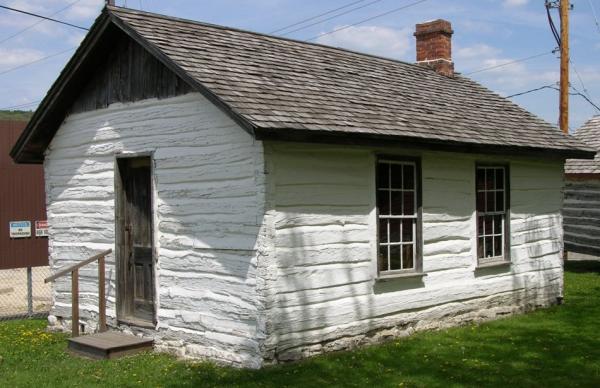Nords in the Midwest
| Grade | 9th -12th Grades | Class | Length of Lesson | 1-2 class periods |
| Lesson Title | Nords in the Midwest |
| Unit Title | |
| Unit Compelling Question | How did Norwegian immigration affect Iowa's policy issues? |
| Historical Context: Large numbers of Norwegians immigrated to the United States between 1850-1930 seeking opportunity and employment. Agricultural disasters had resulted in crop failure, famine, and loss of farm work between 1840 and 1870. In the United States, Norwegians could seek employment in industry, as well as seek farm land. Early groups of Norwegians settled in Illinois and then spread to Wisconsin, Iowa, Minnesota and the Dakotas, where the Homestead Act gave them access to land. The Homestead Act of 1862 allowed anyone who was the head of a family or at least 21 years old, including new immigrants, single women, and freed slaves, to claim 160 free acres of federal land providing they met some basic requirements. Homesteaders were required to pay a small filing fee and agree to work the land and improve it over five years, including building a home on it. Large numbers of Norwegians settled in northeast Iowa, near the town of Decorah and in nearby counties. The majority of these settlers were farmers who felt at home in the hills and forests of northeast Iowa, which reminded them of Norway. In the 1860s, a handful of Norwegian immigrants to Iowa who were followers of the State Church in Norway, or the Norwegian Synod, tried to develop a system of parochial schools where they could teach all of the subjects, including religion and the Norwegian language, as a way of maintaining Norwegian identity. The idea, however, was not popular with the people in the Norwegian Synod's church congregations because they preferred to send their children to the "common schools" or public schools to learn English and American ways. This school building, the Rovang School, was one of three Norwegian parochial schools built to provide part-time religious education in the Norwegian language. The school was built in 1880 and served as a parochial school in rural Decorah for about four decades. The Rovang School was used primarily for religious education and students spent two week sessions in the schoolhouse, taking time off from public school during that period. The content was taught in Norwegian and included devotions, history of Lutherans, history of the Bible and hymns. Johan Hagen was the teacher and taught from 1888-1918. The creation of the Norwegian schools caused controversy among the church and among the public schools intially. In the mid to late 1800s. a high increase of immigrants was seen entering the United States from various countries. As they struggled to settle down in the country and find work, they were generally not accepted or welcomed by Americans. The term "cultural assimilation" began in schools where immigrant students were taught "American" customs and to leave behind their country's traditions and way of doing things. This included what they ate, wore, how they spoke and what they learned. The method was used in hopes of assimilating immigrants into American culture. When news of creating a separate Norwegian school broke, many were worried that the school would separate them again and resort them back to the "immigrant outcast," making it hard to find work and survive in American society. The public school and the church came to a compromise that students would only attend the religious school part-time to ensure that they would not miss out on learning English and American customs. |
|
| Lesson Supporting Question | |
| Lesson Overview | This lesson plan will analyze Norwegian immigration and the effect this had on Iowa policy and issues. |
| Primary Sources Used |
|
| Resources Needed | Documents at the end of uploaded original lesson plan |
| Standard | |
| Lesson Target | |
| Lesson Themes | Cultural Events, Immigrants |
|
| Formative Assessment (How will you use the formative assessments to monitor and inform instruction?) |
KWL Chart |
| Summative Assessment (How does the lesson connect to planned summative assessment(s)?) |
Journal reflections throughout unit |
| Author | Kylie Kozelka | Created | Last Edited | ||||
| Reviewer: Dr. Lisa Millsaps, University of Northern Iowa | |||||||
| Lesson Plan Development Notes: Teaching Methods, University of Northern Iowa, Fall 2018 | |||||||


